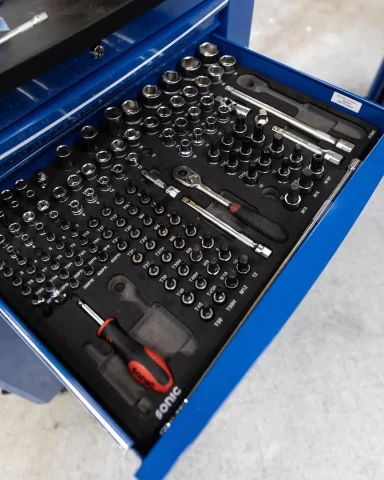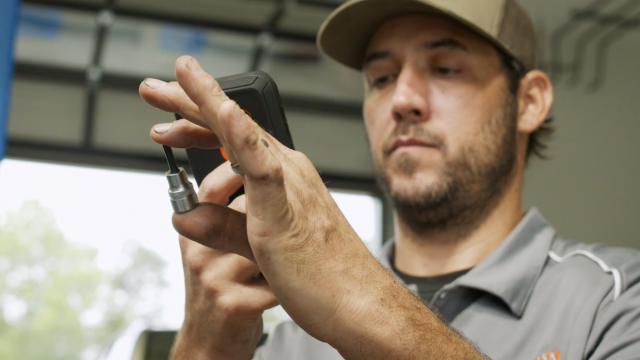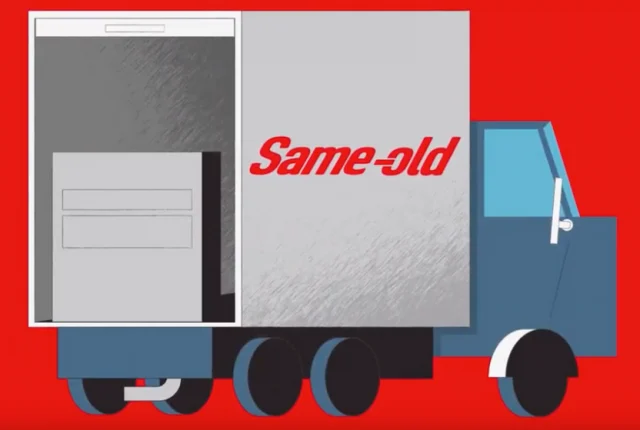Walk any high-performing service department and you’ll see the same pattern: tools where techs expect them, clean benches, mirrored bays, and managers who can spot a problem at a glance. That’s 5S—Sort, Set in order, Shine, Standardize, Sustain—adapted from manufacturing and now essential for dealer service operations that run like micro-factories. The good news: you don’t need a capital overhaul to get there. With the right hardware and habits, you can stand up a credible 5S program in weeks, not quarters.
Fast, Practical, Affordable
Begin with a single pilot bay or quick-service bay. Capture baseline metrics—flag hours per tech, RO cycle time, comeback rate, and missing-tool incidents—so you can prove impact. Define the “role kit” for that bay (e.g., quick-service versus diagnostic) to avoid buying gear you won’t use.

Make standards physical
Posters in the breakroom don’t enforce 5S—tools in foam inlays do. Sonic turns “Set in order” into something you can see instantly and audit in seconds. Their color-contrasting EVA foam inlays give every tool a labeled cavity, making a missing 10 mm socket obvious at a glance. Role-specific layouts let you mirror drawers across bays and shifts, which shortens ramp time for new hires and eliminates tribal knowledge.
Pair the foam with Sonic’s toolboxes or modular cabinets and start cutting steps that add up to minutes per RO. When every bay looks the same, techs move seamlessly, and leaders can spot deviations instantly.
Keep it affordable with total-cost thinking.
Sonic’s affordable solutions lower the running cost of 5S:
- Loss prevention: Foam visibility slashes time spent hunting for tools and reduces reorder waste.
- Consistency at scale: Deep U.S. inventory (6,000+ SKUs) keeps replacements like-for-like, preserving standards.
- Reliability: A lifetime warranty cuts admin friction and downtime from broken storage hardware.
For most dealerships, those savings show up as higher bay utilization, fewer changeover overruns, and faster RO turns—payback in months, not years.
Standardize the system
Document one “Golden Bay” and copy it. Post drawer maps, torque charts, and fluid specs at eye level. Institute two lightweight rhythms:
- 60-second end-of-shift reset: return tools to foam, wipe bench, empty trash.
- Weekly foam audit: log foam completeness (% of cavities filled) and missing-tool incidents; close gaps within 24 hours.
Add a monthly photo audit (one representative drawer and bench) and tie audits to KPIs on a simple dashboard.
Train to the hardware.
Onboard techs by walking the bay: what’s in each drawer, how foam audits work, where shared tools live, and how to request replacements. Because the system is visual, training takes minutes and sticks.
Scale by role, not by roofline
Once the pilot proves out, replicate by technician role across the shop, then across stores in your group. Standard kits and mirrored bays let you flex labor to demand without productivity penalties.
The bottom line
A dealership service department is a production line with customers attached. 5S gives you the operating system; Sonic Tools USA provides the physical layer that makes standards visible, repeatable, and affordable. Start with one bay, make the standards tangible, and let the gains—fewer searches, faster turns, cleaner audits—fund the rollout. That’s 5S the dealer way: practical, scalable, and built to last.




